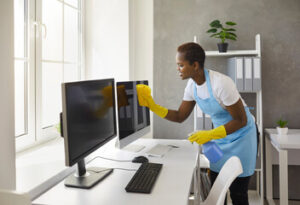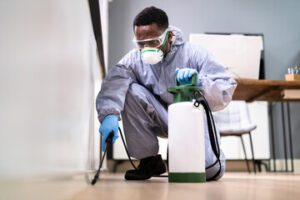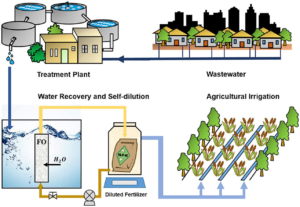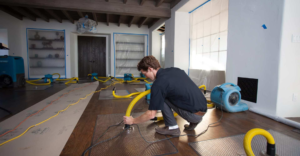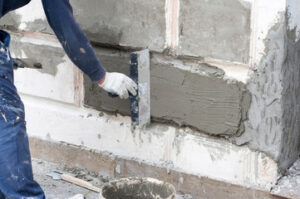Goldendoodles are intelligent, highly trainable dogs that get along well with children. However, like many other breeds, they can suffer from separation anxiety and need to have regular outlets for their energy through exercise and playtime. Click the Goldendoodle Puppies For Sale Ohio to learn more.
Responsible breeders only use reputable genetic testing to ensure the puppies are healthy. These pups are prone to glaucoma and cataracts, so pet parents should watch for symptoms such as dilated pupils.

A dog is a wonderful addition to any family. It provides companionship, exercise, and unconditional love. It can also help children learn about responsibility and compassion. However, pet allergies can make owning a dog difficult for some people. Fortunately, if you suffer from allergy symptoms, there are steps you can take to minimize your allergic reactions. These include understanding the breed’s genetic makeup, spending time with the dog before committing, and conducting allergy tests. The best way to ensure that you can enjoy a puppy is to work with ethical breeders who prioritize the health of their dogs.
Goldendoodles are a cross between two purebred dogs and have inherited the best qualities of both parent breeds. They are highly social, intelligent, and eager to please. They are playful and active, ideal for families with kids and other pets. They are also known for their non-shedding coats and hypoallergenic properties. The curly hair of the poodle is more likely to trap dander than the straight fur of a Golden Retriever, which means that less dander is shed into the air and on furniture.
The first generation of goldendoodles (F1s) is typically the most hypoallergenic because it has a higher percentage of poodle genes. However, F1s may not be a good choice for allergy sufferers if their parents have wavy or curly coats.
For those with severe allergies, the best Goldendoodles are F2b, F2c, or F3c puppies. These pups are a little more expensive than F1 and F2b pups but have the same non-shedding benefits. If you are looking for a F3c puppy, ask the breeder about their health screening and testing.
You can find a reputable Goldendoodle breeder by searching online or asking for referrals from friends and family members. An ethical breeder will provide thorough health and genetic testing for each dog before breeding them. They will also follow strict breeding guidelines to avoid health problems. Moreover, they will have an extensive list of available puppies that meet your needs and expectations. This will help you to choose a puppy that is the right fit for your family.
Goofy
Goldendoodles are goofy, playful dogs that enjoy a good romp with their humans. They also love to engage in trick training and other types of mental stimulation. Keeping your puppy busy with these activities can help prevent boredom, which can lead to destructive behaviors like chewing or digging.
The lovable personality of a goldendoodle makes them a great choice for families with children. They’re patient with kids and love to play games, including fetch and frisbee. These pups are also highly intelligent, so they learn quickly. They can even do tricks on command! However, keep in mind that goldendoodles are prone to two conditions, both of which can be serious: glaucoma and cataracts.
These pups are a newer breed, but they’ve quickly become a favorite for pet parents across America. They combine the golden retriever’s sunny disposition with the poodle’s intelligence and low-shedding propensity. As a result, they’re friendly, adaptable, and hypoallergenic. They’re also larger than their parent breeds, which makes them a good choice for those with allergies to high-shedding dogs.
If you’re considering getting a goldendoodle, be sure to work with a reputable breeder. These breeders should have extensive genetic profiles for their puppies’ parents to be able to predict the traits that will appear in their offspring. These profiles should include information on furnishings, coat type, and any diseases that the parents may have.
A reputable breeder will also be knowledgeable about the health history of their puppies’ parents and will only breed them when they’re in good condition. Additionally, they should never breed dogs that are carriers of inherited diseases.
Versatile
Goldendoodles are a highly adaptable breed. They thrive in many living situations, from cozy apartments to spacious homes with yards, as long as they receive plenty of human interaction throughout the day and are not left alone for extended periods of time. As a result, they are good fits for families with children and other pets. They are also intelligent and responsive to training, including basic obedience lessons and more advanced agility classes.
F1 Goldendoodles (those bred from a purebred Golden Retriever and a purebred Poodle) are typically less shedding than a standard Golden Retriever, making them more suitable for people with allergies. These puppies can be a great fit for first-time dog owners or those who want an intelligent, hypoallergenic pup.
A Goldendoodle’s heritage as a descendant of two retrievers means they enjoy a lot of exercise and will likely be eager to join you on a run, go for a walk or play frisbee at the park with your friends or kids. They make excellent companions for active people, and they love romping around with the family at home, as well.
Because of their sociable and confident personalities, Goldendoodles will bond closely with their family members. They thrive on interaction and prefer to be included in all activities, from playing fetch and tug-of-war with the kids to accompanying you on a hike or running errands.
As a result, they are not well-suited for independent lifestyles or isolation. They tend to develop anxiety and boredom, which can lead to destructive behaviors. In addition to regular physical activity and socialization, it is important that you provide your Goldendoodle with mental stimulation through interactive toys, games, and daily training sessions.
If you are considering a Goldendoodle, consider working with a reputable breeder or shelter to select your perfect match. Responsible breeding practices will help ensure that the puppies are healthy, vetted for common canine health issues, and microchipped. They should also be up to date on vaccinations and preventative care, as well as spayed/neutered before they are placed into a new home. Lastly, be sure to consider pet insurance for your Goldendoodle, as it can be beneficial in managing unexpected veterinary costs.
Family-Friendly
Goldendoodles love the company of their people and enjoy being included in family activities. They also bond closely with children and thrive in their company. In fact, they’ve been used as therapy dogs and service dogs for people with special needs. Because they’re highly observant, they will pick up on how their owners interact with their children and other members of the family. For example, if they see that a newborn baby is treated with care and affection, they’ll treat the child similarly. They’re also highly playful and often join their families for outdoor adventures.
Goldendoodle puppies require regular exercise to stay healthy and happy. They’re a combination of two energetic breeds, so they need to be able to run around and expend their energy. Ideally, they should live in a house with a large yard or a fenced-in space. They will also appreciate daily walks and training sessions at a dog park.
While most Goldendoodles love other animals, it is important to be cautious when introducing them to new pets. They may be suspicious of strangers and exhibit aggressive behavior in response to perceived threats. It is best to wait until your Goldendoodle is at least a year old before adding a second pet to your household.
When you buy a goldendoodle puppy, it’s important to choose a responsible breeder who prioritizes the pup’s health and well-being. Reputable breeders will have extensive knowledge about the breed and can answer any questions you might have. They also offer ongoing support after you’ve taken your puppy home, demonstrating their dedication to the pups’ lifetime wellbeing. In contrast, unethical breeders will focus on profit at the expense of the puppy’s health and wellbeing.
In the end, the right goldendoodle puppy can provide your family with years of unwavering loyalty and unconditional love. However, it’s important to take the time to research your options and find the best match for you. Once you’ve found the perfect Goldendoodle, make sure to shower it with love and provide adequate training so that it can live a long, happy life.

